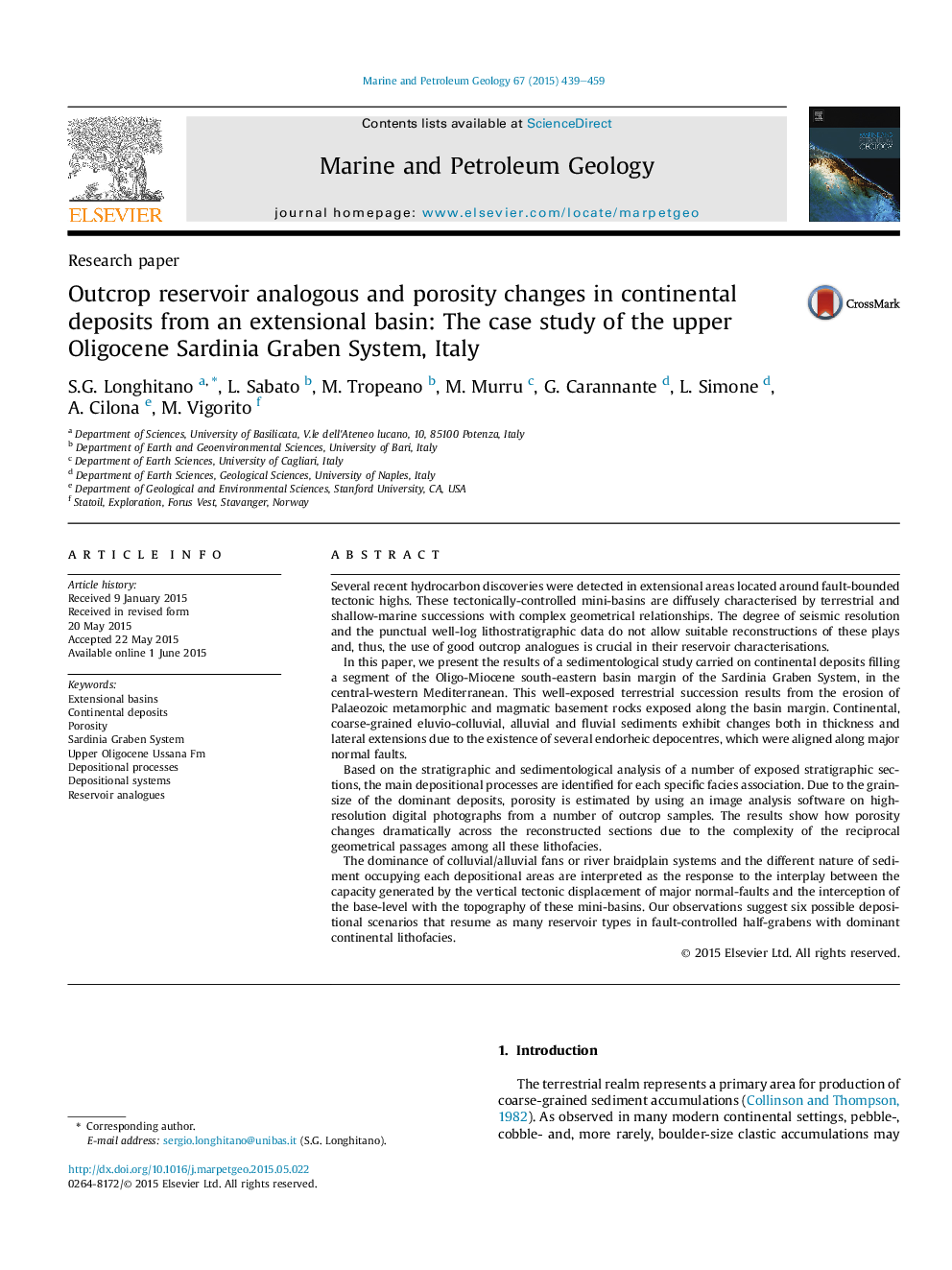| Article ID | Journal | Published Year | Pages | File Type |
|---|---|---|---|---|
| 6434940 | Marine and Petroleum Geology | 2015 | 21 Pages |
â¢Hydrocarbon resources often occupy fault-bounded tectonic margins of extensional basins.â¢Sediments are often continental, coarse-grained but under a good seismic resolution.â¢The upper Oligocene of the Sardinian Graben System represents a good analogue for these systems.â¢Indirect porosity estimations indicate trends among colluvial, alluvial and fluvial deposits.â¢Six fault-controlled half-graben depositional/reservoir models are thus proposed.
Several recent hydrocarbon discoveries were detected in extensional areas located around fault-bounded tectonic highs. These tectonically-controlled mini-basins are diffusely characterised by terrestrial and shallow-marine successions with complex geometrical relationships. The degree of seismic resolution and the punctual well-log lithostratigraphic data do not allow suitable reconstructions of these plays and, thus, the use of good outcrop analogues is crucial in their reservoir characterisations.In this paper, we present the results of a sedimentological study carried on continental deposits filling a segment of the Oligo-Miocene south-eastern basin margin of the Sardinia Graben System, in the central-western Mediterranean. This well-exposed terrestrial succession results from the erosion of Palaeozoic metamorphic and magmatic basement rocks exposed along the basin margin. Continental, coarse-grained eluvio-colluvial, alluvial and fluvial sediments exhibit changes both in thickness and lateral extensions due to the existence of several endorheic depocentres, which were aligned along major normal faults.Based on the stratigraphic and sedimentological analysis of a number of exposed stratigraphic sections, the main depositional processes are identified for each specific facies association. Due to the grain-size of the dominant deposits, porosity is estimated by using an image analysis software on high-resolution digital photographs from a number of outcrop samples. The results show how porosity changes dramatically across the reconstructed sections due to the complexity of the reciprocal geometrical passages among all these lithofacies.The dominance of colluvial/alluvial fans or river braidplain systems and the different nature of sediment occupying each depositional areas are interpreted as the response to the interplay between the capacity generated by the vertical tectonic displacement of major normal-faults and the interception of the base-level with the topography of these mini-basins. Our observations suggest six possible depositional scenarios that resume as many reservoir types in fault-controlled half-grabens with dominant continental lithofacies.
